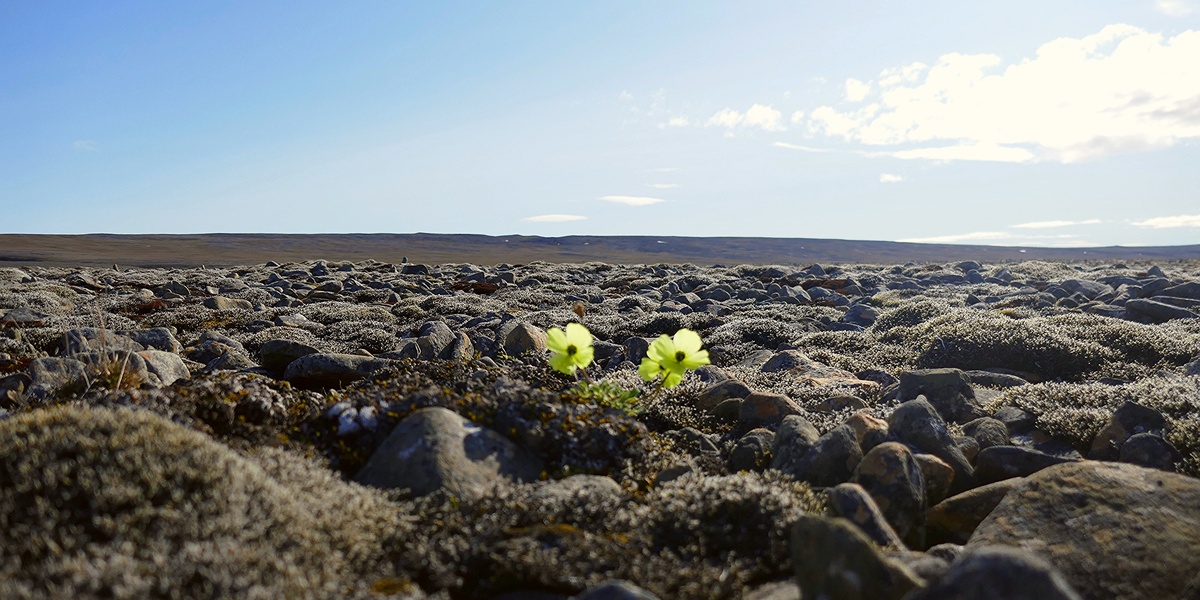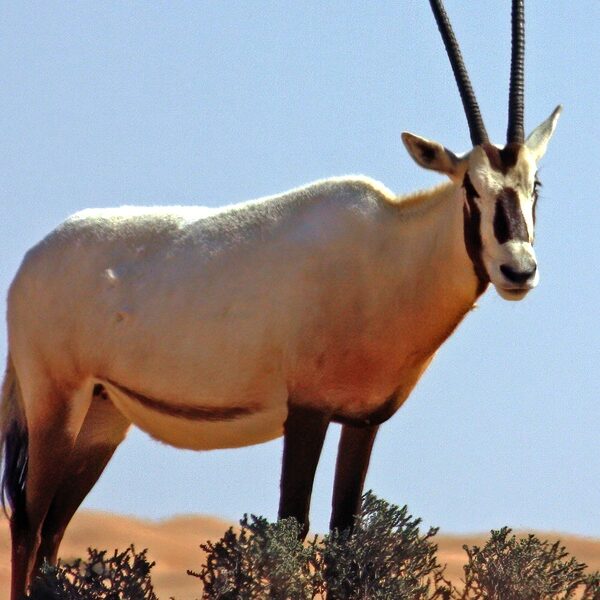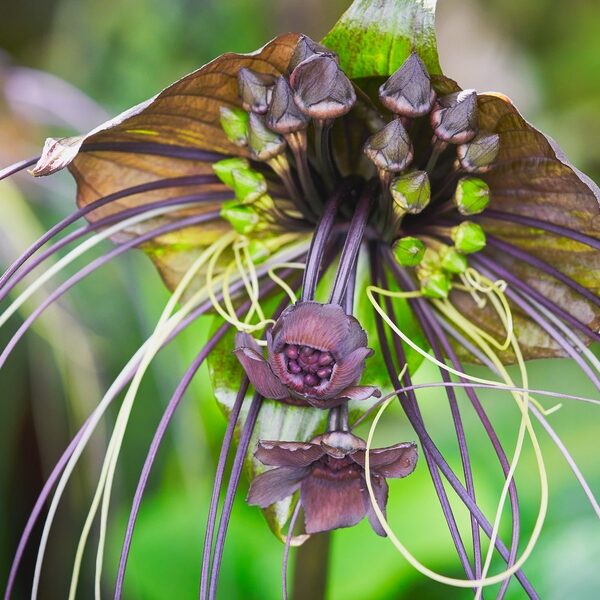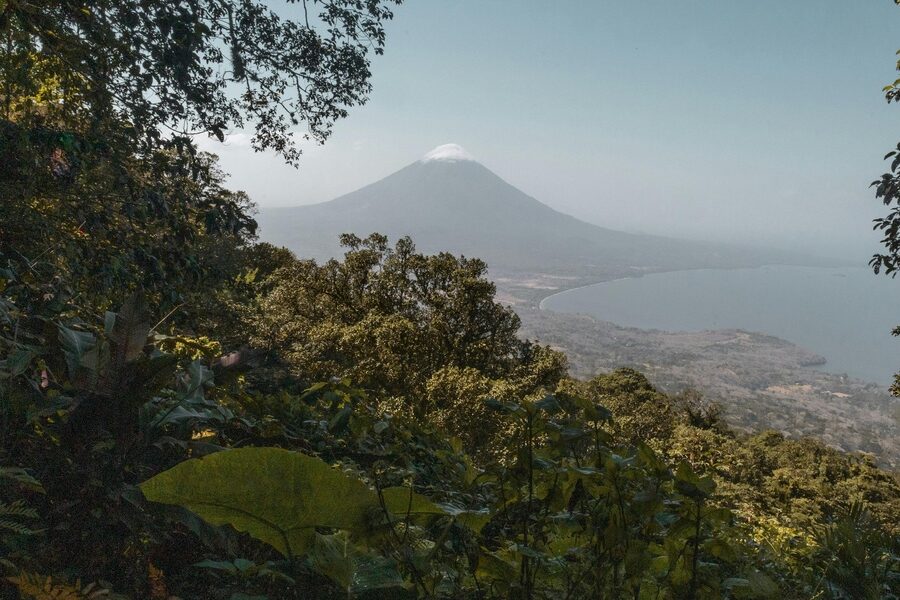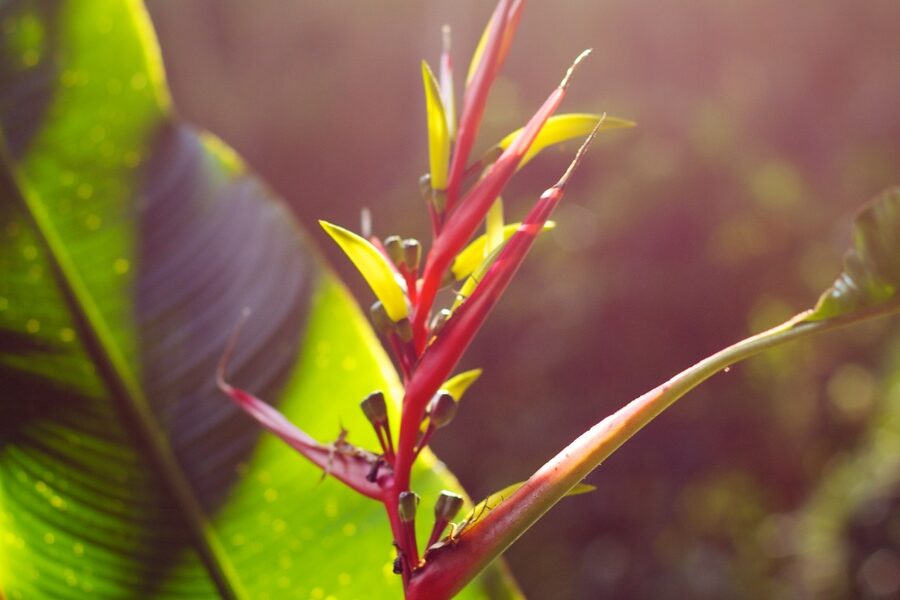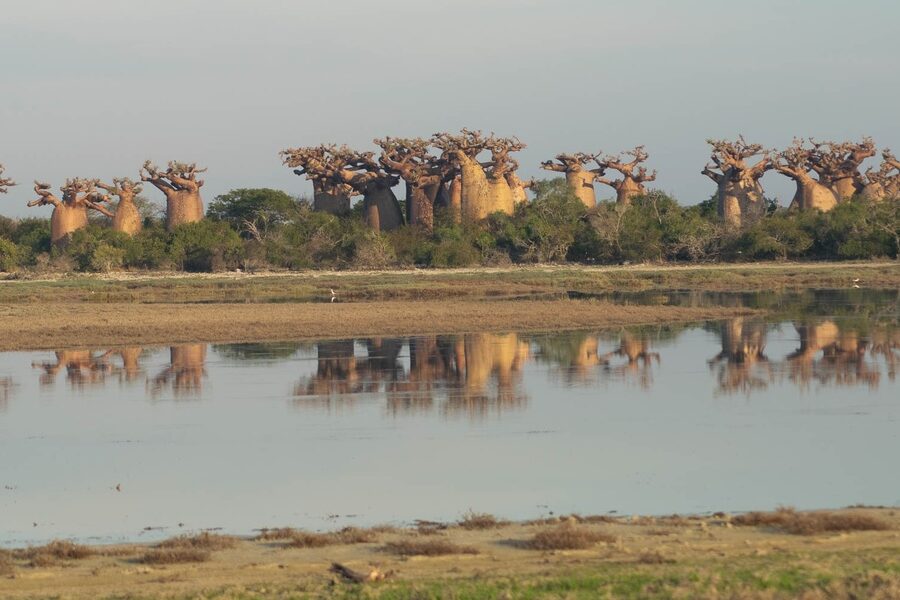Iceland’s windswept terrain may look sparse at a glance, but its soils, volcanoes and glacial history have produced a surprising variety of hardy plant life. This list gathers the island’s native flora and the ecological settings that let them survive in cold, exposed conditions.
There are 94 Iceland’s native plants, ranging from Alpine Bearberry to Woolly Willow. For each species, entries are organized by Scientific name,Native status,Habitat & range, and you’ll find below.
Which habitats in Iceland support the most native plant species?
Coastal cliffs, blanket bogs, montane heath and alpine tundra host many of Iceland’s specialists because they offer stable niches with fewer competitors and grazers; wetlands and early-successional lava fields also support distinct assemblages. Use the Habitat & range column below to see which environments each species prefers.
How can I confirm whether a plant is truly native or introduced?
Check the Native status field in the list and verify the Scientific name against reputable sources (Icelandic Botanical Society, national databases or herbaria). Native species tend to have established, often localized ranges in the Habitat & range descriptions, whereas introductions usually note recent spread or human association.
Iceland’s Native Plants
| Name | Scientific name | Native status | Habitat & range |
|---|---|---|---|
| Mountain Avens | Dryas octopetala | Native (National Flower) | Dry heaths, gravelly soils; common throughout Iceland. |
| Downy Birch | Betula pubescens | Native | Woodlands, scrublands; historically widespread, now in sheltered areas. |
| Woolly Fringe-moss | Racomitrium lanuginosum | Native | Lava fields, barren ground; widespread, forms vast carpets. |
| Iceland Moss | Cetraria islandica | Native | Heaths, lava fields; common across Iceland. |
| Arctic Thyme | Thymus praecox subsp. arcticus | Native | Dry, sandy, or gravelly soils; common throughout. |
| Angelica | Angelica archangelica | Native | Riverbanks, damp slopes; common, especially in lowlands. |
| Sea Campion | Silene uniflora | Native | Coastal gravel, sea cliffs; common along Iceland’s coastline. |
| Moss Campion | Silene acaulis | Native | Gravelly soil, rocky ledges; common in highlands and mountains. |
| Crowberry | Empetrum nigrum | Native | Heaths, lava fields, bogs; very common throughout Iceland. |
| Bog Bilberry | Vaccinium uliginosum | Native | Heaths, bogs, and scrubland; widespread and common. |
| Common Butterwort | Pinguicula vulgaris | Native | Bogs, fens, damp ground; common throughout. |
| Wood Crane’s-bill | Geranium sylvaticum | Native | Birch woods, meadows, tall herb slopes; common. |
| Common Cottongrass | Eriophorum angustifolium | Native | Bogs, marshes, wet meadows; very common. |
| Northern Green Orchid | Platanthera hyperborea | Native | Damp meadows, wetlands; fairly common. |
| Arctic Poppy | Papaver radicatum | Native | Sandy or gravelly soils; highlands and northern areas. |
| Tufted Saxifrage | Saxifraga cespitosa | Native | Rocky ground, cliffs, gravel beds; very common. |
| Lyme Grass | Leymus arenarius | Native | Coastal sand dunes; common along sandy coasts. |
| Holly Fern | Polystichum lonchitis | Native | Rocky slopes, scree, ravines; common in mountainous areas. |
| Common Juniper | Juniperus communis | Native | Heaths and rocky slopes; rare, mostly in the North and East. |
| Tea-leaved Willow | Salix phylicifolia | Native | Riverbanks, damp ground, scrub; one of the most common willows. |
| Woolly Willow | Salix lanata | Native | Riverbanks, damp slopes; common throughout Iceland. |
| Dwarf Birch | Betula nana | Native | Moors, heaths, tundra; common, especially in highlands. |
| Alpine Lady’s-mantle | Alchemilla alpina | Native | Grasslands, heaths, gravelly areas; very common. |
| Roseroot | Rhodiola rosea | Native | Sea cliffs, rocky slopes, scree; common. |
| Kidney-leaved Saxifrage | Saxifraga hirculus | Native (Vulnerable) | Bogs and marshes; rare, found in specific wetland areas. |
| Icelandic Mouse-ear | Cerastium nigrescens subsp. nigrescens | Endemic | Serpentine soils; very rare, Westfjords. |
| Thrift | Armeria maritima | Native | Coastal areas, salt marshes, cliffs; very common. |
| Map Lichen | Rhizocarpon geographicum | Native | Exposed rock surfaces; very common everywhere. |
| Reindeer Lichen | Cladonia rangiferina | Native | Heaths, lava fields, sparse woodland; very common. |
| Dulse | Palmaria palmata | Native | Intertidal rocks; common on all coasts. |
| Oysterleaf | Mertensia maritima | Native | Coastal gravel and sandy shores; common. |
| Northern Bedstraw | Galium boreale | Native | Dry grasslands, heaths; common. |
| Alpine Cinquefoil | Potentilla crantzii | Native | Dry slopes, grasslands, heaths; very common. |
| Wild Angelica | Angelica sylvestris | Native | Damp meadows, riverbanks; common. |
| Field Gentian | Gentianella campestris | Native | Grasslands, heaths; common. |
| Scottish Asphodel | Tofieldia pusilla | Native | Bogs, fens, damp moors; fairly common. |
| Three-leaved Rush | Juncus trifidus | Native | Wind-exposed fellfields, gravelly ridges; common. |
| Spiked Wood-rush | Luzula spicata | Native | Dry, gravelly soil, fellfields; common. |
| Viviparous Fescue | Festuca vivipara | Native | Grasslands, mountains; very common. |
| Alpine Bistort | Bistorta vivipara | Native | Various habitats, from meadows to heaths; very common. |
| Common Sorrel | Rumex acetosa | Native | Grasslands, meadows; common. |
| Sea Pea | Lathyrus japonicus | Native | Coastal sand and shingle; common locally. |
| Glittering Wood-moss | Hylocomium splendens | Native | Birch woods, heaths; common. |
| Sphagnum Moss | Sphagnum spp. | Native | Bogs, fens, poor wetlands; very common. |
| Brittle Bladder-fern | Cystopteris fragilis | Native | Rock crevices, walls, scree; very common. |
| Alpine Clubmoss | Diphasiastrum alpinum | Native | Heaths, grasslands; common. |
| Stiff Sedge | Carex bigelowii | Native | Tundra, heaths, mountains; very common. |
| Bladder-sedge | Carex vesicaria | Native | Wetlands, lake shores; common. |
| Round-leaved Sundew | Drosera rotundifolia | Native | Wet bogs, peaty ground; uncommon. |
| Sea Sandwort | Honckenya peploides | Native | Coastal sand and shingle beaches; very common. |
| Pygmy Buttercup | Ranunculus pygmaeus | Native | Snowbeds, damp gravel in mountains; common in highlands. |
| Glacier Buttercup | Ranunculus glacialis | Native | High mountains, scree, damp gravel; common at high altitude. |
| Starry Saxifrage | Saxifraga stellaris | Native | Wet flushes, stream banks, damp rocks; common. |
| Purple Saxifrage | Saxifraga oppositifolia | Native | Rocky ground, cliffs, scree; very common. |
| Marsh Marigold | Caltha palustris | Native | Marshes, wet ditches, stream banks; common. |
| Wood-sorrel | Oxalis acetosella | Native | Mossy woods, shaded ravines; locally common. |
| Northern Rock-cress | Cardaminopsis petraea | Native | Gravelly soil, rocks, lava fields; very common. |
| Common Dog-violet | Viola riviniana | Native | Woodlands, grasslands; common. |
| Heath Bedstraw | Galium saxatile | Native | Heaths, dry grasslands; common. |
| Fairy Flax | Linum catharticum | Native | Dry grasslands, heaths; common. |
| Dog-rose | Rosa canina | Native | Geothermal areas, warm slopes; rare, south and west Iceland. |
| Rowan | Sorbus aucuparia | Native | Woodlands, ravines, cliffs; common. |
| Red Campion | Silene dioica | Native | Cliffs, ledges, herb slopes; common. |
| Cow-wheat | Melampyrum sylvaticum | Native | Birch woods, heathland; locally common. |
| Common Lousewort | Pedicularis palustris | Native | Bogs, fens, wet meadows; common. |
| Red Clover | Trifolium pratense | Native | Grasslands, meadows; common. |
| White Clover | Trifolium repens | Native | Grasslands, disturbed ground; very common. |
| Stone Bramble | Rubus saxatilis | Native | Rocky ground, scrub, woods; common. |
| Silverweed | Potentilla anserina | Native | Damp ground, roadsides, coastal areas; common. |
| Selfheal | Prunella vulgaris | Native | Grasslands, woods, disturbed ground; common. |
| Sea Thrift | Armeria maritima | Native | Coastal areas, salt marshes, cliffs; very common. |
| Heath Spotted-orchid | Dactylorhiza maculata | Native | Heaths, damp grasslands; common. |
| Frog Orchid | Dactylorhiza viridis | Native | Old grasslands; fairly common. |
| Northern Dock | Rumex longifolius | Native | Damp meadows, disturbed ground; common. |
| Water Avens | Geum rivale | Native | Damp meadows, stream banks, woods; common. |
| Chickweed Wintergreen | Trientalis europaea | Native | Birch woods, heathland; common. |
| Twinflower | Linnaea borealis | Native | Birch woods, mossy ground; rare, mostly in the east. |
| Bog Rosemary | Andromeda polifolia | Native | Bogs and wet heaths; common. |
| Bog Whortleberry | Vaccinium uliginosum | Native | Heaths, bogs, and scrubland; widespread and common. |
| Alpine Bearberry | Arctous alpina | Native | Heaths and fellfields; common. |
| Dwarf Willow | Salix herbacea | Native | Snowbeds, fellfields, mountain summits; very common. |
| Glaucous Willow | Salix glauca | Native | Scrubland, riverbanks; common. |
| Icelandic Hawkweed | Pilosella islandica | Native | Rocky or sandy soil; very common. |
| Arctic Fescue | Festuca hyperborea | Native | Gravelly soil, fellfields; common in highlands. |
| Alpine Foxtail | Alopecurus magellanicus | Native | Damp ground, snowbeds; common in mountains. |
| Icelandic Rush | Juncus arcticus subsp. intermedius | Native | Riverbeds, gravel bars; common. |
| Common Hair-cap Moss | Polytrichum commune | Native | Damp heaths, woods, bogs; very common. |
| Ostrich-plume Moss | Ptilium crista-castrensis | Native | Birch woodlands; locally common. |
| Red-stemmed Feather-moss | Pleurozium schreberi | Native | Heaths and woodlands; very common. |
| Dog Lichen | Peltigera canina | Native | Mossy ground, soil, rocks; common. |
| Snow Lichen | Flavocetraria nivalis | Native | Wind-swept alpine heaths; common in highlands. |
| Comb-leaved Saddle-moss | Barbilophozia lycopodioides | Native | Heaths, grasslands; common. |
| Slender Mouse-tail Moss | Isothecium myosuroides | Native | Rocks, tree bases in woodlands; common. |
| Shaggy Moss | Rhytidiadelphus triquetrus | Native | Woodlands, grassy slopes; common. |
Images and Descriptions
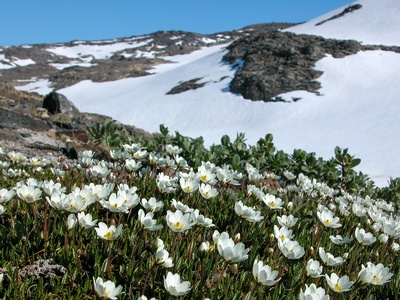
Mountain Avens
Iceland’s national flower forms low mats with small, oak-like leaves and a single, striking white flower with a yellow center. After flowering, it produces a distinctive, fluffy seed head, adding to its charm on the tundra.

Downy Birch
Iceland’s most common native tree, often growing as a shrub due to harsh conditions. It has distinctive white bark and small, toothed leaves. These hardy trees form the backbone of Iceland’s few native woodlands.
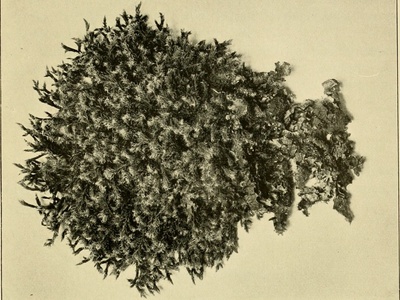
Woolly Fringe-moss
This is the iconic, thick, grey-green moss that blankets Iceland’s vast lava fields. Its woolly appearance comes from colorless, hair-like leaf tips, which help it absorb moisture directly from the air in its harsh habitat.
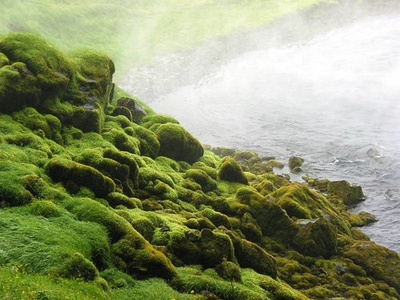
Iceland Moss
Despite its name, this is a lichen, not a moss. It has curly, brownish, branched lobes and was historically a vital food source, used in bread, puddings, and soups. It is still used in herbal remedies today.
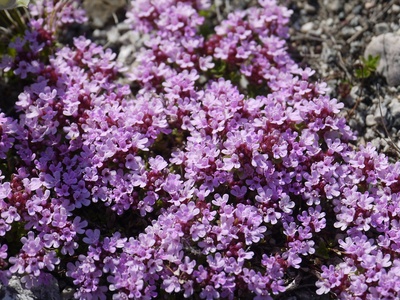
Arctic Thyme
This low-growing, mat-forming herb releases a wonderful aromatic scent when crushed. It has tiny leaves and produces beautiful clusters of small purple flowers in summer, attracting bees and adding color to the stark landscape.

Angelica
A tall, impressive plant with large, globe-like clusters of greenish-white flowers. Every part of the plant was historically used for food, medicine, and even currency. It has a strong, unique, and sweet scent.
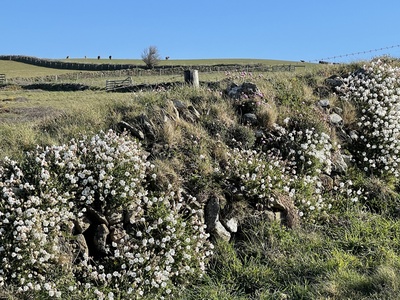
Sea Campion
Identified by its distinctive, inflated, balloon-like calyx (the papery part behind the petals) and five notched white petals. This cushion-forming plant is a beautiful and common sight along the coast, thriving in salty spray.
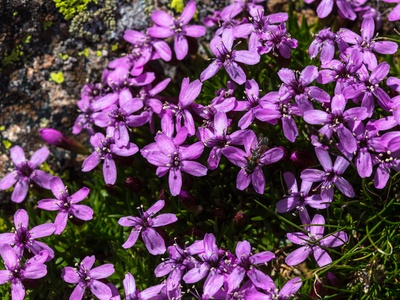
Moss Campion
This plant forms dense, moss-like cushions that can be decades old. In early summer, the cushion is spectacularly covered in tiny, bright pink flowers, creating a splash of vivid color in an otherwise barren, rocky environment.

Crowberry
A low-lying, evergreen shrub with needle-like leaves that forms dense mats. It produces juicy, black berries in late summer that are a popular food for both people and birds. The berries are a staple of Icelandic foraging.
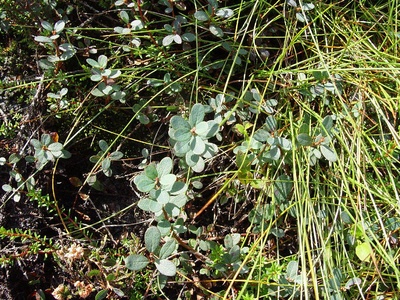
Bog Bilberry
This small, woody shrub has dull green, oval leaves and produces small, pinkish, bell-shaped flowers. Its main attraction is the sweet, edible, blue-black berries that ripen in late summer, similar to North American blueberries.

Common Butterwort
A small carnivorous plant with a rosette of sticky, yellowish-green leaves that trap insects for nutrients. From the center rises a single, slender stalk bearing a beautiful, deep violet, spurred flower. A fascinating bog-dweller.

Wood Crane’s-bill
Also known as Midsommarblomster, this is one of Iceland’s most beautiful wildflowers. It grows relatively tall and produces numerous, striking violet-blue flowers with pale centers, often forming dense, colorful stands in summer.

Common Cottongrass
Instantly recognizable by its fluffy, white, cotton-like seed heads that appear in summer and wave in the wind. This sedge is a quintessential plant of Icelandic wetlands, creating a beautiful, surreal sight in large numbers.
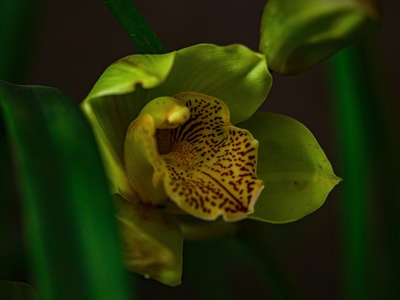
Northern Green Orchid
One of Iceland’s native orchids, this plant has a spike of small, yellowish-green, and subtly fragrant flowers. Its understated beauty and intricate flower structure make it a delightful find for keen-eyed observers in wet areas.
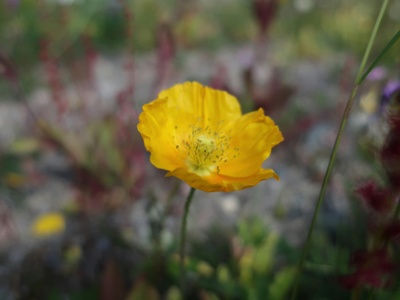
Arctic Poppy
A true arctic survivor, this delicate poppy has yellow or sometimes white, cup-shaped flowers on a leafless, hairy stem. It thrives in the harsh, barren landscapes of the highlands, a symbol of resilience.

Tufted Saxifrage
This plant forms small, tight cushions of green, mossy foliage. In summer, it sends up short stems topped with one or more relatively large, star-shaped white flowers. It’s a hardy pioneer species on barren ground.
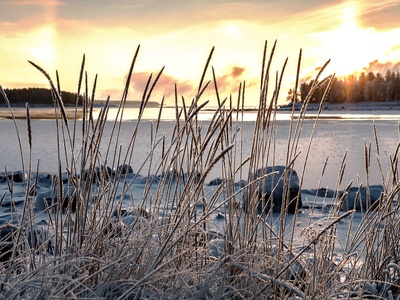
Lyme Grass
A tall, robust grass with broad, blue-grey leaves that is critical for stabilizing sand dunes. Its extensive root system binds the sand, preventing erosion and creating habitat for other coastal plants.

Holly Fern
An attractive, evergreen fern with stiff, leathery, dark green fronds. Each leaflet is spiny-toothed, giving it a holly-like appearance. It often grows in sheltered rock crevices, adding a splash of green year-round.
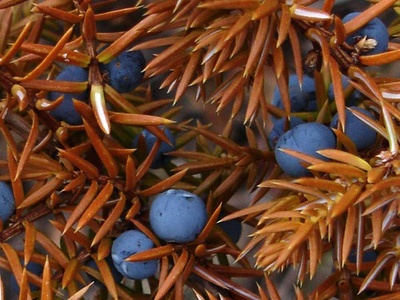
Common Juniper
Iceland’s only native coniferous shrub. It grows very low to the ground in a sprawling form to withstand the wind and cold. It has sharp, needle-like leaves and produces small, blue-black berry-like cones.
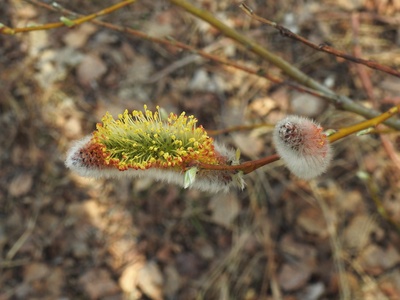
Tea-leaved Willow
A common native shrub, often forming dense thickets in wetter areas. It has shiny, dark green leaves that are paler underneath and produces fuzzy catkins in the spring before the leaves fully emerge.
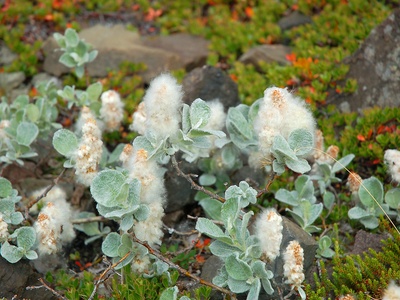
Woolly Willow
This beautiful willow is notable for its leaves and young stems, which are covered in a dense layer of soft, silvery-white woolly hairs. It produces large, showy yellow catkins in the spring.

Dwarf Birch
Unlike its tree-like cousin, the Dwarf Birch is a low, spreading shrub, rarely growing more than a meter high. It has small, rounded, serrated leaves that turn beautiful shades of red and yellow in the autumn.
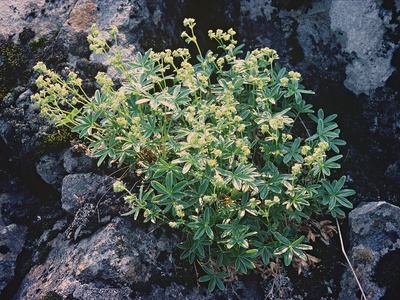
Alpine Lady’s-mantle
Easily identified by its distinctive palmate leaves, which have silvery, silky hairs on their undersides, making them shine in the sun. It has clusters of tiny, inconspicuous yellow-green flowers.

Roseroot
A succulent plant with fleshy, grey-green leaves and dense heads of yellow (or sometimes reddish) flowers. Its thick root has a rose-like scent when cut and is a well-known adaptogen in traditional medicine.
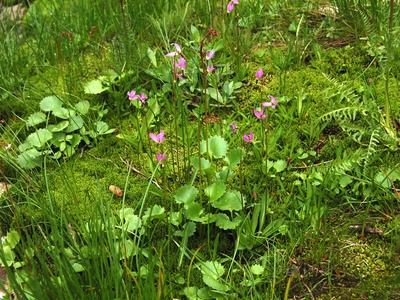
Kidney-leaved Saxifrage
A beautiful and rare saxifrage with bright yellow, star-shaped flowers on tall, reddish stems. It is a protected species in Iceland, and its presence indicates a healthy, undisturbed wetland habitat.

Icelandic Mouse-ear
A true Icelandic specialty, this endemic plant grows only on the serpentine rock of a specific mountain in the Westfjords. It forms loose tufts and has relatively large white flowers compared to its small size.
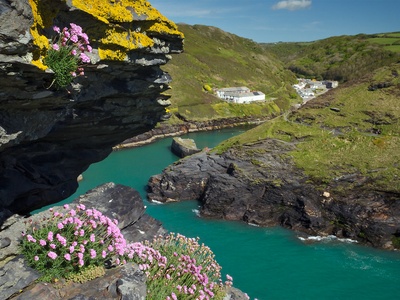
Thrift
Also known as Sea Pink, this plant forms neat, grassy tussocks from which leafless stalks rise, topped with globular heads of bright pink flowers. It is highly tolerant of salt and wind, making it a coastal classic.
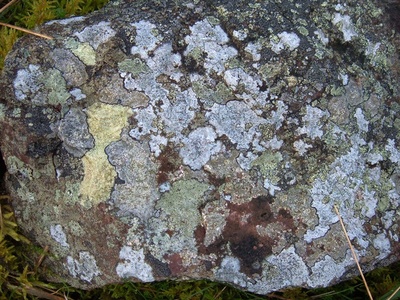
Map Lichen
This crustose lichen forms bright, chartreuse-to-yellow patches on rocks, often outlined by a black border, resembling a map. It grows extremely slowly and is used by scientists to date rock surfaces (lichenometry).
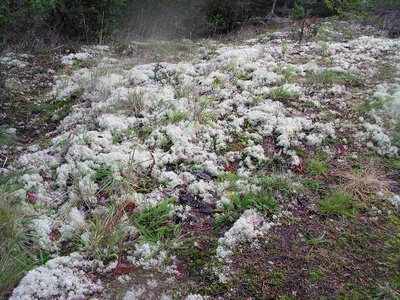
Reindeer Lichen
A pale, greyish, shrub-like lichen that forms intricate, branching structures resembling tiny trees or antlers. It is a crucial food source for reindeer in other arctic regions and is an iconic part of the Icelandic ground cover.
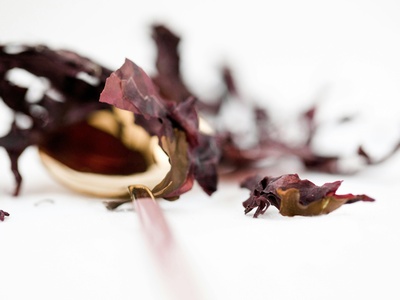
Dulse
A red seaweed with a leathery texture and flat, hand-like fronds. Traditionally harvested and eaten as a snack or in soups, it is rich in vitamins and minerals. It can be found attached to rocks at low tide.
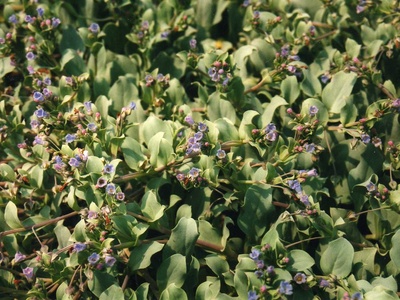
Oysterleaf
A beautiful coastal plant with fleshy, blue-green leaves that taste remarkably like oysters. It trails along the shingle and produces small, bell-shaped flowers that are pink in bud and turn a stunning sky-blue.

Northern Bedstraw
This upright plant has whorls of four narrow leaves at intervals up its square stem. In summer, it is topped with a dense cloud of tiny, sweet-smelling, four-petalled white flowers, attracting many pollinators.
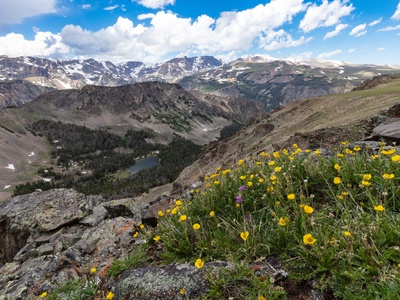
Alpine Cinquefoil
A low-growing plant with strawberry-like leaves and bright, cheerful yellow flowers. Each of the five petals often has a distinct orange spot at its base, making it easy to identify and admire.
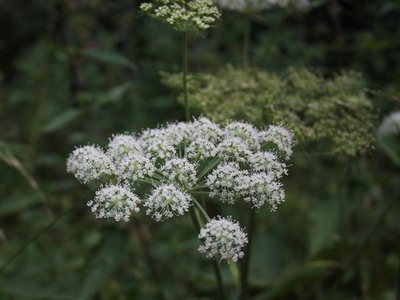
Wild Angelica
Smaller and more slender than its famous cousin (*A. archangelica*), this plant has similar umbels of white or pinkish flowers. It is still an impressive sight in damp fields and adds to the lush summer vegetation.

Field Gentian
A beautiful biennial plant that produces stunning, four-petalled, purplish-blue, tubular flowers in late summer. The entrance to the flower is fringed with fine hairs, giving it a delicate and intricate appearance.

Scottish Asphodel
A small, elegant member of the lily family with a basal tuft of grass-like leaves. It sends up a slender stalk with a dense, small cluster of greenish-white, star-like flowers. A subtle beauty of Iceland’s wetlands.

Three-leaved Rush
A key plant in harsh, windswept high-altitude environments. This rush forms dense tufts and is characterized by its three long, thread-like bracts that extend from below the small cluster of brown flowers.

Spiked Wood-rush
A grass-like plant that forms dense tufts. It is recognizable by the long, soft white hairs along its leaf margins and its nodding, spike-like cluster of small, dark brown flowers. A common sight in mountain habitats.
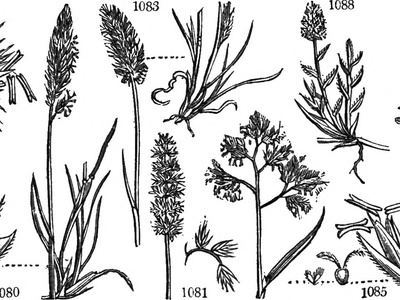
Viviparous Fescue
This grass has a unique reproductive strategy. Instead of seeds, it produces tiny plantlets in its flower spike, which can fall off and take root immediately. This adaptation is perfect for the short arctic growing season.

Alpine Bistort
Another viviparous plant. Below a spike of small white or pinkish flowers, it produces small, reddish-brown bulbils. These bulbils can detach and grow into new plants, a common survival tactic in the north.

Common Sorrel
Known for its distinctly sharp, lemony flavor, this plant’s arrow-shaped leaves have been foraged for centuries. It produces a tall, reddish flower spike. Look for it in grassy fields across the country.
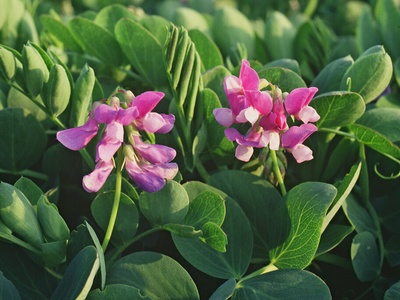
Sea Pea
A sprawling coastal plant with pinnate leaves and beautiful purple pea-like flowers. Its ability to fix nitrogen allows it to thrive on nutrient-poor sandy shores, where it helps to stabilize the coastline.
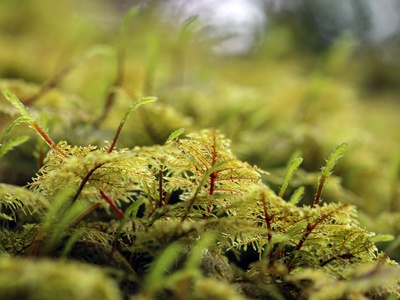
Glittering Wood-moss
A beautiful, feathery moss that grows in distinct, step-like annual layers. Its fresh green, glittering appearance brightens the floor of Iceland’s native birch woodlands, creating a lush, springy carpet.

Sphagnum Moss
The builder of Iceland’s bogs. This amazing moss can hold vast amounts of water and creates acidic, nutrient-poor conditions. It comes in various colors, from green to deep red, and is vital for peat formation.
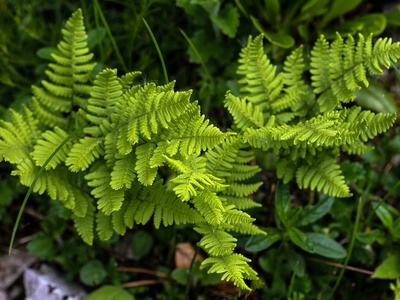
Brittle Bladder-fern
A delicate, lacy fern with finely divided, bright green fronds. It gets its name from its fragile stalks. It’s one of the most common and widespread ferns, tucked into sheltered, damp, and shady rock faces.

Alpine Clubmoss
This ancient, non-flowering plant is a vascular relative of ferns. It forms low, creeping mats of scaly, blue-green, branching stems that resemble miniature conifer trees, often found in heathland landscapes.
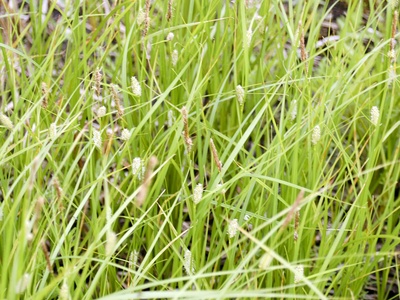
Stiff Sedge
A dominant plant in many Icelandic habitats, this sedge forms extensive mats of turf. It has characteristic triangular stems (sedges have edges) and separate male and female flower spikes. A key tundra species.
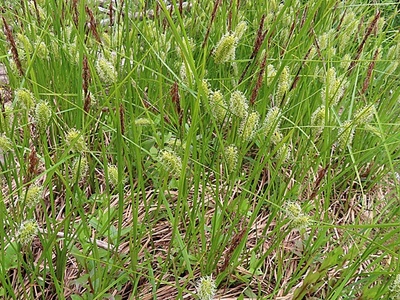
Bladder-sedge
A large, tussock-forming sedge found in very wet places. It is easily identified by its inflated, bladder-like, yellowish-green seed sacs (perigynia) that are clustered together on drooping spikes.
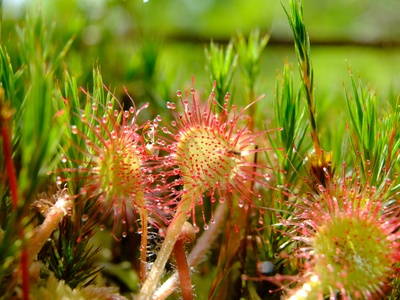
Round-leaved Sundew
A tiny but spectacular carnivorous plant. Its reddish, spoon-shaped leaves are covered in sticky tentacles that glisten in the sun like dew, trapping insects. Look closely for it on the surface of sphagnum bogs.

Sea Sandwort
A fleshy, mat-forming plant that thrives right on the shoreline. Its succulent, bright green leaves help it store water and resist salt spray. It helps to stabilize the upper beach with its dense growth.
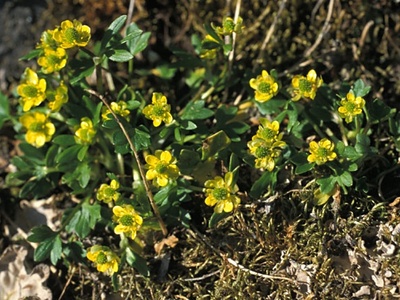
Pygmy Buttercup
One of the smallest buttercups in the world. This tiny plant with its minuscule yellow flowers is one of the first to bloom in spring, often found right at the edge of melting snow patches in the highlands.
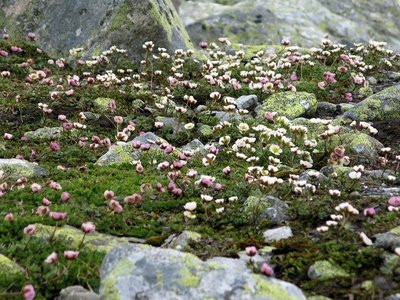
Glacier Buttercup
A true high-alpine specialist, this buttercup can grow at higher altitudes than almost any other vascular plant. It has waxy, divided leaves and flowers that open white and fade to pink or reddish-purple.

Starry Saxifrage
This saxifrage has a basal rosette of slightly fleshy leaves and sends up a leafless stem with a loose cluster of star-shaped white flowers. Each petal has two distinctive yellow or reddish spots at its base.

Purple Saxifrage
One of the very first flowers to bloom in the Icelandic spring, often while snow is still on the ground. It forms low mats and is covered with incredibly bright, magenta-purple, star-like flowers. A welcome sign of spring.

Marsh Marigold
This plant brings a cheerful splash of brilliant yellow to wet areas in spring. It has large, waxy, kidney-shaped leaves and big, simple flowers that look like oversized buttercups. A vibrant and unmissable wetland plant.

Wood-sorrel
A delicate woodland plant with clover-like leaves that fold up at night. The leaves have a sharp, lemony taste. It produces a single, beautiful white flower with faint pink or purple veins.
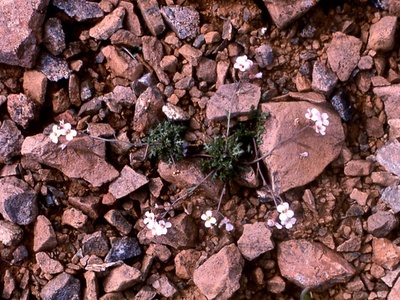
Northern Rock-cress
A member of the mustard family, this plant forms low rosettes of leaves and produces clusters of small, four-petalled white or pale lilac flowers. It is a hardy pioneer species, colonizing barren volcanic landscapes.
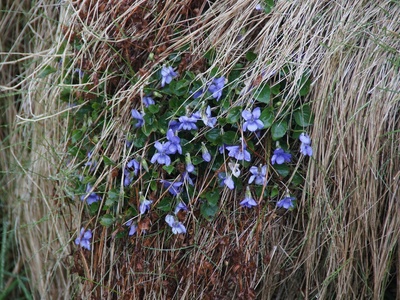
Common Dog-violet
The most common violet in Iceland. It has heart-shaped leaves and produces delicate, unscented, blue-violet flowers with a pale, notched spur at the back. A lovely sign of spring in grassy areas and birch woods.
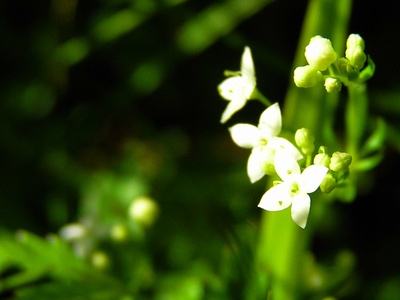
Heath Bedstraw
This plant forms low, sprawling mats of fine stems with whorls of small, narrow leaves. In summer, these mats are covered in a profusion of tiny, four-petalled white flowers, creating a delicate white carpet.
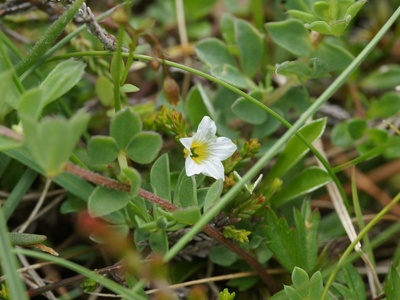
Fairy Flax
A very slender and delicate plant with a wiry stem and small, opposite leaves. It bears tiny, perfect, five-petalled white flowers that open in the sunshine. A dainty and elegant member of the grassland community.

Dog-rose
Iceland’s only native rose, this shrubby plant is found in a few geothermally warmed locations. It has classic pinnate leaves and produces beautiful, simple, five-petalled pink or white flowers in summer.

Rowan
Also known as Mountain Ash, this small tree is famous for its clusters of creamy-white flowers in spring and brilliant red-orange berries in autumn. It’s a hardy tree often found clinging to cliffs or in sheltered woodlands.
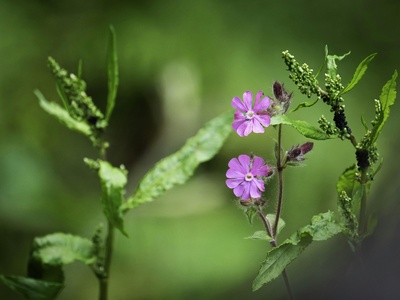
Red Campion
A beautiful wildflower with bright, magenta-pink flowers. Like its relatives, the petals are deeply notched, almost looking like ten petals instead of five. It often grows in lush, green areas, providing a vibrant splash of color.
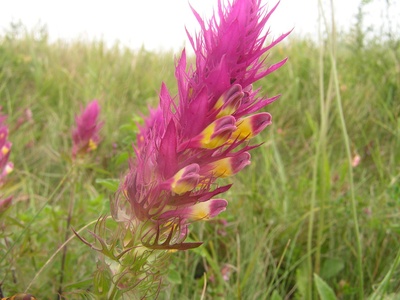
Cow-wheat
An interesting, semi-parasitic plant that taps into the roots of other plants for nutrients. It has pairs of simple leaves and produces tubular, two-lipped yellow flowers, often found in the understory of birch woods.
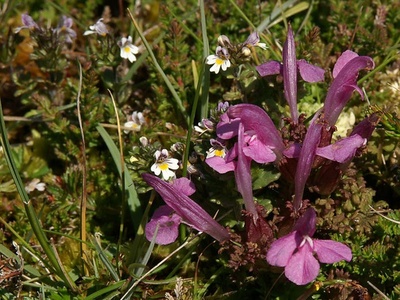
Common Lousewort
Another semi-parasitic plant, this one has fern-like leaves and spikes of intricate, two-lipped, pinkish-purple flowers. Its unusual flower shape is adapted for pollination by bumblebees. A common sight in wetlands.

Red Clover
Instantly recognizable by its trifoliate (three-part) leaves and its dense, rounded heads of pinkish-purple flowers. A vital plant for bumblebees and a common, cheerful flower of Icelandic meadows.

White Clover
Like its relative, this plant has the classic three-part leaf but with globular heads of white flowers. It is a low, creeping plant that roots along its stems, forming dense patches in grassy areas.
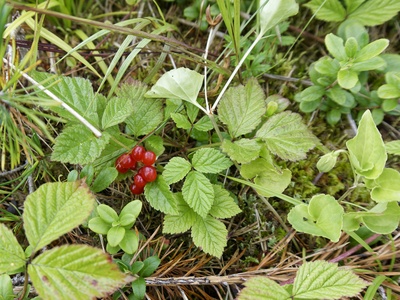
Stone Bramble
A low, scrambling plant related to raspberries. It has trifoliate leaves and small clusters of white flowers. It produces a small, bright red, edible fruit composed of a few large drupelets, with a sharp, acidic taste.
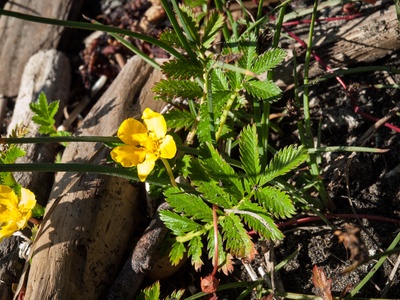
Silverweed
A creeping plant with beautiful, pinnate leaves that are distinctively silvery-white and hairy on the underside. It produces single, bright yellow, buttercup-like flowers on long stalks throughout the summer.

Selfheal
A low-growing member of the mint family. It has a dense, oblong head of violet, two-lipped flowers. As its name suggests, it has a long history of use in herbal medicine for healing wounds.

Sea Thrift
Also known as Sea Pink, this plant forms neat, grassy tussocks from which leafless stalks rise, topped with globular heads of bright pink flowers. It is highly tolerant of salt and wind, making it a coastal classic.
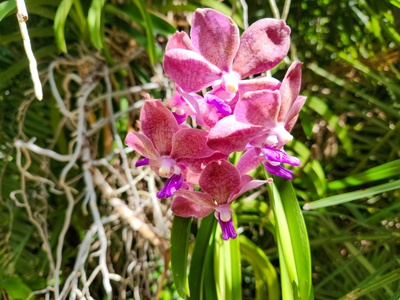
Heath Spotted-orchid
One of Iceland’s more striking orchids. It has broad leaves, often marked with dark spots, and a dense spike of pale pink or lilac flowers. Each flower’s lower lip is intricately marked with darker pink lines and loops.
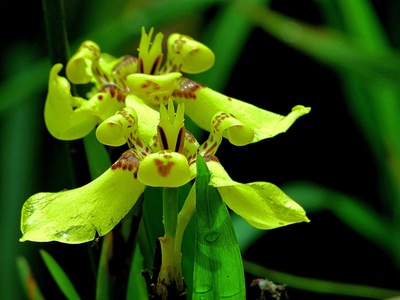
Frog Orchid
A small and inconspicuous orchid that is easily overlooked. It has a spike of small, greenish or reddish-brown flowers. The flower’s lower lip is shaped like a tiny, elongated human figure, giving it a whimsical appearance.

Northern Dock
A tall, robust plant with very large, broad, wavy-edged leaves. It produces a huge, dense flower spike that turns a rusty-reddish brown as the seeds mature, making it a prominent sight in fields in late summer.
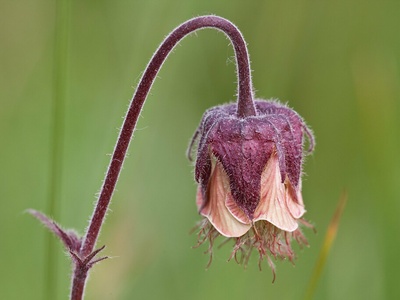
Water Avens
A graceful plant with nodding, bell-shaped flowers. The petals are a subtle peachy-pink, but the calyx behind them is a contrasting and more prominent dusky reddish-purple. A beautiful sight in damp, shady places.
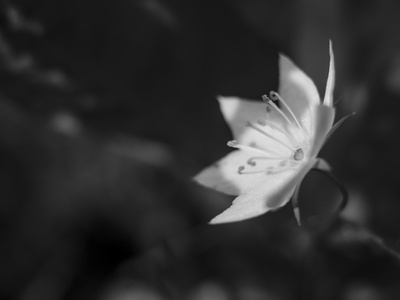
Chickweed Wintergreen
A delicate and beautiful woodland flower. It has a single, slender stem with a whorl of shiny green leaves at the top. From the center of this whorl rise one or two exquisite, seven-petalled, star-like white flowers.
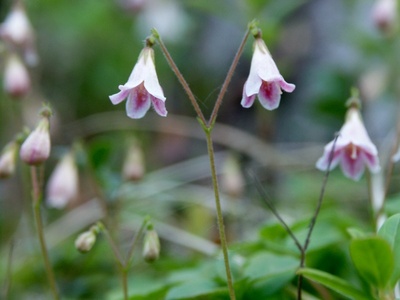
Twinflower
Named in honor of Carl Linnaeus, this is a delicate, creeping evergreen plant. It sends up thin stalks that fork into two, each holding a small, fragrant, pinkish-white, bell-shaped flower. A rare and precious find.
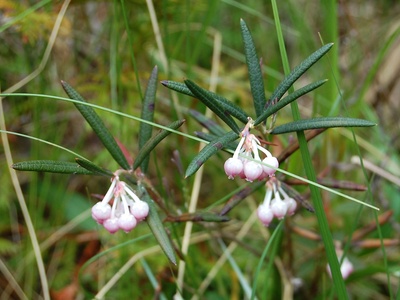
Bog Rosemary
A small, evergreen shrub with narrow, leathery leaves that are dark green above and whitish beneath. In early summer, it produces clusters of beautiful, small, pink, bell-shaped flowers at the tips of its stems.

Bog Whortleberry
This small, woody shrub has dull green, oval leaves and produces small, pinkish, bell-shaped flowers. Its main attraction is the sweet, edible, blue-black berries that ripen in late summer, similar to North American blueberries.

Alpine Bearberry
A low, trailing, deciduous shrub. Its leaves are notable for turning a spectacular, brilliant crimson in the autumn. It has small, white, urn-shaped flowers and produces black, juicy (but unpalatable) berries.

Dwarf Willow
Reputedly the world’s smallest tree, this tiny willow often has only a few small, round, shiny leaves and rises just a few centimeters above the ground. Its woody stem creeps underground. An amazing arctic-alpine survivor.
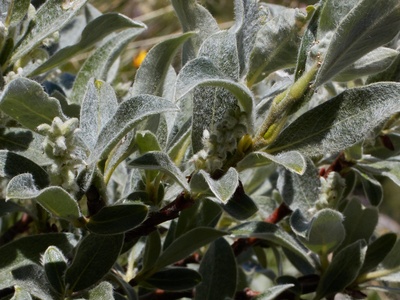
Glaucous Willow
A variable shrubby willow, typically recognized by its leaves which are often covered in greyish hairs, giving them a glaucous (bluish-grey) look. It is one of the most common willow species forming scrub in Iceland.

Icelandic Hawkweed
A low-growing plant with a basal rosette of hairy leaves. It sends up a leafless stalk bearing a single, lemon-yellow, dandelion-like flower head. It spreads by runners, often forming patches.

Arctic Fescue
A densely tufted grass adapted to the harshest, high-altitude environments in Iceland. Its fine, bristle-like leaves help it conserve water in dry, windswept conditions. A critical component of fellfield vegetation.

Alpine Foxtail
A common mountain grass with a soft, dense, cylindrical flower head that resembles a miniature cattail or a fox’s tail. It is an important grazing grass for sheep in mountain pastures.

Icelandic Rush
A hardy rush that thrives on the unstable, frequently flooded gravel bars of glacial rivers. It has stiff, upright, cylindrical stems and a compact cluster of brown flowers that appears to emerge from the side of the stem.
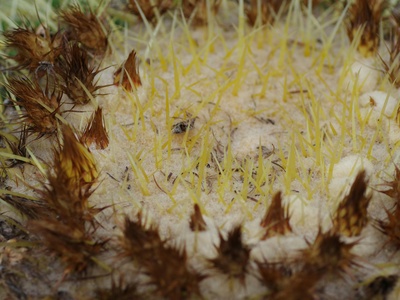
Common Hair-cap Moss
A large, robust moss that forms tall, loose tufts resembling tiny forests. Its stiff, spiky leaves are arranged around the stem, giving it the appearance of a green star when viewed from above.

Ostrich-plume Moss
An exceptionally beautiful moss with perfectly pinnate, feather-like fronds that resemble a tiny ostrich plume. Its bright, yellow-green color creates a stunning, feathery carpet on the floor of mature birch woods.
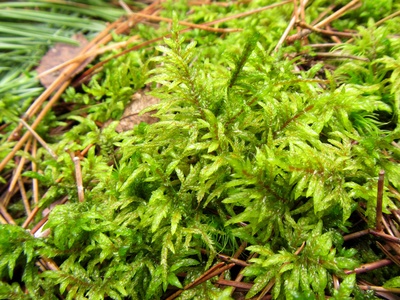
Red-stemmed Feather-moss
A common mat-forming moss recognized by its reddish stems, which are visible through its loosely arranged, pale green leaves. It forms extensive, springy carpets in both heathland and woodland habitats.

Dog Lichen
A large, leafy lichen with broad, brownish-grey lobes. Its underside has prominent, root-like structures called rhizines. It was once believed to be a cure for rabies, hence its common name.
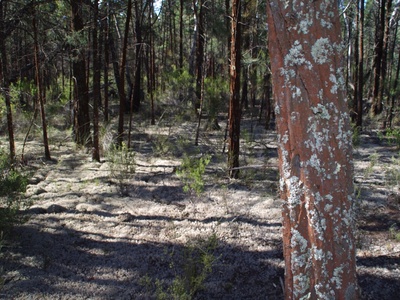
Snow Lichen
A pale, greenish-yellow, leafy lichen with curled, upright lobes. It is highly adapted to long snow cover and is a characteristic species of exposed, high-altitude ridges and heaths.

Comb-leaved Saddle-moss
A type of liverwort, which is a relative of mosses. It forms wefts of green, leafy shoots. Its leaves have several lobes and a fringe of cilia along their base, resembling a tiny comb.

Slender Mouse-tail Moss
A common moss that forms dense, green mats on shaded rocks and at the base of birch trees. Its branching stems are somewhat wiry and curved, said to resemble a mouse’s tail.
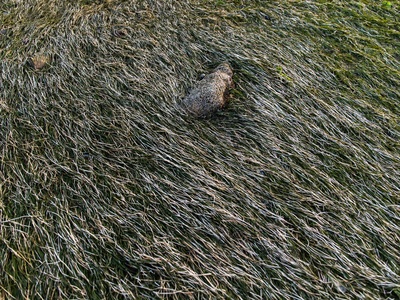
Shaggy Moss
A large, robust moss with stiff, wiry, reddish stems and leaves that stick out in all directions, giving it a distinctive shaggy or pipe-cleaner appearance. It often forms deep, loose carpets.
